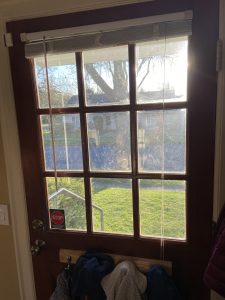June 10th, 2020
20 Things You Don’t Learn Until You Live On Your Own
Adulting has it’s own challenges and rewards. The challenge is doing to work the reward is the freedom and the pride you get when the work is done.
Welcome to adulthood! You’re … well … not going to love it so much at the beginning. There is a steady stream of new expenses, problems and lessons to discover the first few years on your own that may be daunting but will prepare you for the rest of your life. Though the learning part isn’t so fun, acknowledging these challenges is the first step into adulthood.
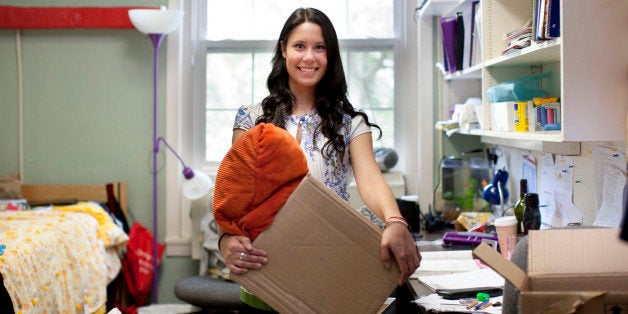
1. Just because you get clean in the shower doesn’t mean your shower is clean. The shower is a dirty, disgusting place unless you scrub it yourself.
3. If you leave your laundry in the dryer for too long, the wrinkles will remain there until you wash those clothes again.
4. Oh, you have the flu? Need to fix a toothache? Is it time for your annual check up? You’re going to have to make those doctor’s appointments, they haven’t been made for you.
5. You will begin to dread the day of the month when your bank emails you a “friendly reminder” to pay your credit card bill.
6. A dishwasher will save you hours of time and energy.

7. Never buy groceries alone. They will go bad quicker than you anticipate.
8. A light bulb blew out? Not going to turn on again until you call the super or install it yourself.

9. Home cooked meals sound fun in theory, but in reality take hours and never taste quite as good as your mom’s.
10. Dry clean only? What the hell is dry clean only?
11. Trader Joe’s should be your new house of worship. Their price motto is “all our items are on sale, day in and day out.”
12. Receiving a letter in the mail is no longer $20 from grandma for your birthday/Christmas/graduation. Now they are bills, junk mail and more bills.

13. A morning cup of coffee is one of the most expensive habits you can acquire.
14. Since you’re an adult, your parents will stop signing your name on birthday/holiday/thank you cards. You’re now responsible for writing those yourself.
15. You’ll beg your parents to stay on their Verizon family plan. If you don’t, watching the data rack up is torture.
16. Internet connection is a precious and valuable commodity. Coincidentally, when that internet is faulty, being on hold with Comcast/Time Warner/Verizon/AT&T will be the bane of your existence.
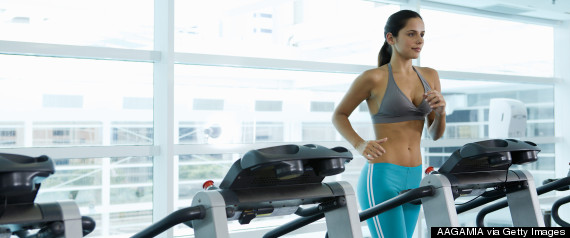
17. Being healthy is a luxury. Gym memberships, organic food and vitamins are extremely expensive. Bright side? You can’t afford food.
18. You’ll start to think of prices in terms of hours you work. That new sweater you want? Not worth eight hours at your desk.

19. What’s that rancid smell coming from the kitchen? Oh, it’s the trash that’s been full to the brim that you haven’t taken out for two weeks.
June 8th, 2020
Recharge and stay creative!
Below is a list of 40 things you can do to “reset” and stay creative. We’re in phase 2 of Covid social distancing so use good judgment for the activities you choose.
https://www.mydomaine.com/creative-things-to-do
When I feel tired/lazy and unmotivated, I find that it’s nice to have a long list of activities easily accessible that you can “pick and choose” from rather than trying to come up with an activity myself.
It can be a practical chore that needs to be done (e.g. cooking, cleaning, laundry), or a more fun activity such as art/music/physical activity. There is no right or wrong when it comes to the activity you choose and you will be feeling much better afterwards.
Some of the activities you can make more festive, e.g. the cooking that you need to do anyway can be turned into a little social dinner with a friend. Invite someone over and socialize!! Make a nice and easy dinner from one of the amazing recipes that are posted on the “Transition Times”. While having your guest over, have some plans for a fun activity planned. e.g. go for a hike, watch a movie, play darts, bean bag toss……
Have fun and socialize, but keep the distance and use masks when in situations that require this.
June 3rd, 2020
11 Ways to Keep Your Teeth Healthy
1. Don’t go to bed without brushing your teeth
It’s no secret that the general recommendation is to brush at least twice a day. Still, many of us continue to neglect brushing our teeth at night. But brushing before bed gets rid of the germs and plaque that accumulate throughout the day.
2. Brush properly
The way you brush is equally important — in fact, doing a poor job of brushing your teeth is almost as bad as not brushing at all. Take your time, moving the toothbrush in gentle, circular motions to remove plaque. Unremoved plaque can harden, leading to calculus buildup and gingivitis (early gum disease).
3. Don’t neglect your tongue
Plaque can also build up on your tongue. Not only can this lead to bad mouth odor, but it can lead to other oral health problems. Gently brush your tongue every time you brush your teeth.
4. Use a fluoride toothpaste
When it comes to toothpaste, there are more important elements to look for than whitening power and flavors. No matter which version you choose, make sure it contains fluoride.
While fluoride has come under scrutiny by those worried about how it impacts other areas of health, this substance remains a mainstay in oral health. This is because fluoride is a leading defense against tooth decay. It works by fighting germs that can lead to decay, as well as providing a protective barrier for your teeth.
5. Treat flossing as important as brushing
Many who brush regularly neglect to floss. “Flossing is not just for getting those little pieces of Chinese food or broccoli that may be getting stuck in between your teeth,” says Jonathan Schwartz, DDS. “It’s really a way to stimulate the gums, reduce plaque, and help lower inflammation in the area.”
6. Don’t let flossing difficulties stop you
Flossing can be difficult, especially for young children and older adults with arthritis. Rather than give up, look for tools that can help you floss your teeth. Ready-to-use dental flossers from the drugstore can make a difference.
7. Consider mouthwash
Advertisements make mouthwash seem necessary for good oral health, but many people skip them because they don’t know how they work. Schwartz says mouthwash helps in three ways: It reduces the amount of acid in the mouth, cleans hard-to-brush areas in and around the gums, and re-mineralizes the teeth. “Mouthwashes are useful as an adjunct tool to help bring things into balance,” he explains. “I think in children and older people, where the ability to brush and floss may not be ideal, a mouthwash is particularly helpful.”
Ask your dentist for specific mouthwash recommendations. Certain brands are best for children, and those with sensitive teeth. Prescription mouthwash is also available.
8. Drink more water
Water continues to be the best beverage for your overall health — including oral health. Also, as a rule of thumb, Schwartz recommends drinking water after every meal. This can help wash out some of the negative effects of sticky and acidic foods and beverages in between brushes.
9. Eat crunchy fruits and vegetables
Ready-to-eat foods are convenient, but perhaps not so much when it comes to your teeth. Eating fresh, crunchy produce not only contains more healthy fiber, but it’s also the best choice for your teeth. “I tell parents to get their kids on harder-to-eat and chew foods at a younger age,” says Schwartz. “So try to avoid the overly mushy processed stuff, stop cutting things into tiny pieces, and get those jaws working!”
10. Limit sugary and acidic foods
Ultimately, sugar converts into acid in the mouth, which can then erode the enamel of your teeth. These acids are what lead to cavities. Acidic fruits, teas, and coffee can also wear down tooth enamel. While you don’t necessarily have to avoid such foods altogether, it doesn’t hurt to be mindful.
11. See your dentist at least twice a year
Your own everyday habits are crucial to your overall oral health. Still, even the most dutiful brushers and flossers need to see a dentist regularly. At minimum, you should see your dentist for cleanings and checkups twice a year. Not only can a dentist remove calculus and look for cavities, but they will also be able to spot potential issues and offer treatment solutions.
Some dental insurance companies even cover more frequent dental checkups. If this is the case for you, take advantage of it. Doing so is especially helpful if you have a history of dental issues, such as gingivitis or frequent cavities.
June 1st, 2020
WINDOW CLEANING
There are many ways of taking care of this task. Remember, SAFETY FIRST! Do not get up on high ladders and risk falling down. There are simpler ways to reach those high windows. It’s not worth risking injury just to have a clean window. See below.
The window low to the ground though (which is often where you spend more awake and social time anyway), could use a good cleaning at this time of the year. Here is a video of some techniques that you can use. If you have other techniques that you use, feel free to share those with me.
https://www.youtube.com/watch?v=iApBJYyi67k&disable_polymer=true
What I’ve found is that when it comes to the dishsoap added to the water LESS is MORE. Meaning – don’t overdo it. A little bit of dish-soap (less than a teaspoon for a large bucket) is plenty.
Cleaning high placed windows with extension pole.
I have found that the same pole that I have for my large outdoor broom also fit for the squeegee that I use for window cleaning. Check and see what you already have at home and you may be able to use that rather than buying an extension pole.
Here is a photo of my “pre and post” on my entry door.
May 27, 2020

Are you considering getting a pet? While owning a pet is rewarding, be mindful that pet ownership is also a huge responsibility. Here are several important things you should consider before getting a pet.
1. Can you commit?
Pet ownership is a long term commitment. Dogs and cats have an average life span of 10-15 years. Would you be able to commit to them for such a long time? Dogs and cats require a lot of attention. If you feel that you can’t devote your time for your pet, getting a choice is not a wise choice for you. Or perhaps you can choose getting a pet like a fish as they are less time demanding.

2. Can you afford?
Know your financial condition. Owning a pet can cost you a lot. Food, grooming, toys, veterinary care and treatment are the expenses you can’t avoid if you own a dog or cat. Owning a fish is less costly compared to other pets.

3. Will pets fit your lifestyle?
If you have long working hours, a busy social life and you travel a lot, think twice before you are getting a pet like a dog and a cat. Like I mention before, dogs and cats require attention. They need you to play and interact with them constantly. Solitude can lead to serious behavioral problems. Make sure your pet can accommodate to your lifestyle.

4. Do research
Do research beforehand on the pet you wish to get. Pet care for instance, requires a great deal of knowledge. Grooming, nutrition tips and safety are stuff you need to know before you get a pet dog or cat. Just google it. You may find tons of information through the internet. If you think information from the internet are not reliable, you can always refer to the vet in your community.
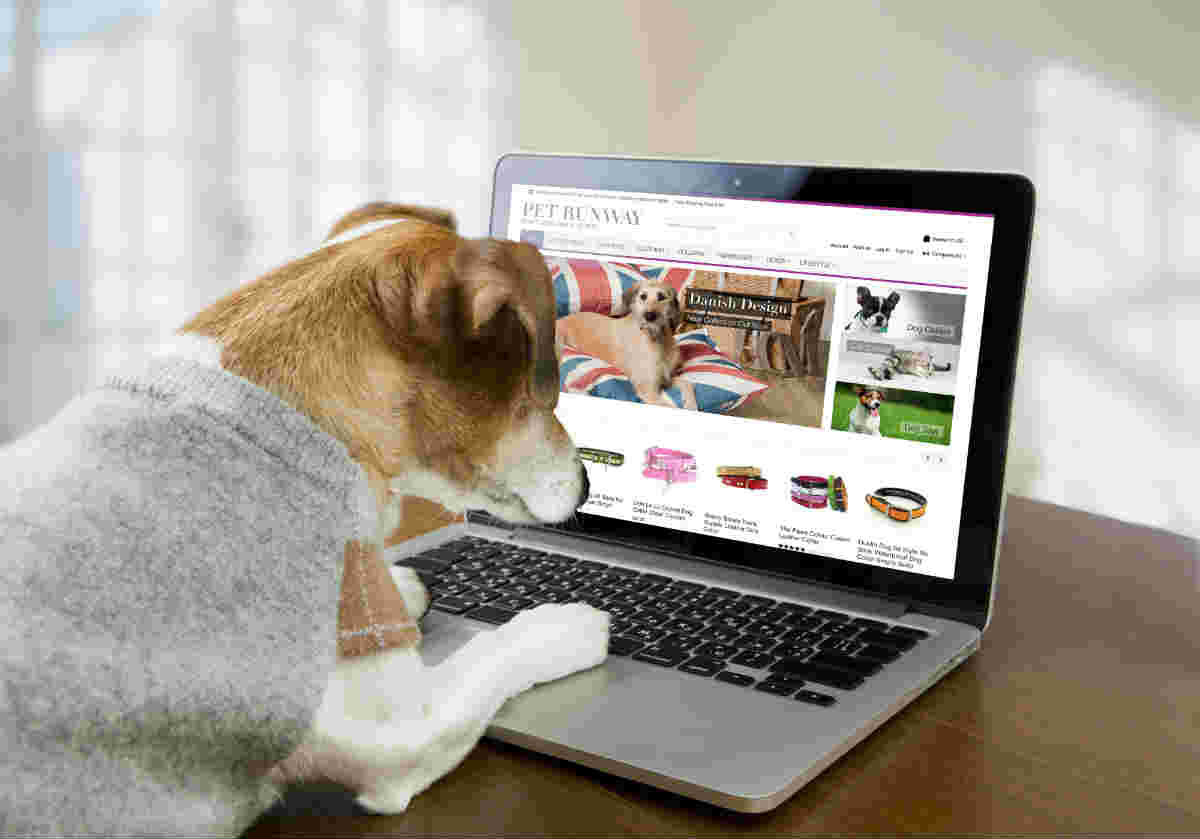
5. Allergies
Make sure you or your family don’t have allergies towards fur and animals. If you are not sure whether you are allergic to cats and dogs, spend time at your friend’s house with a pet to find out.
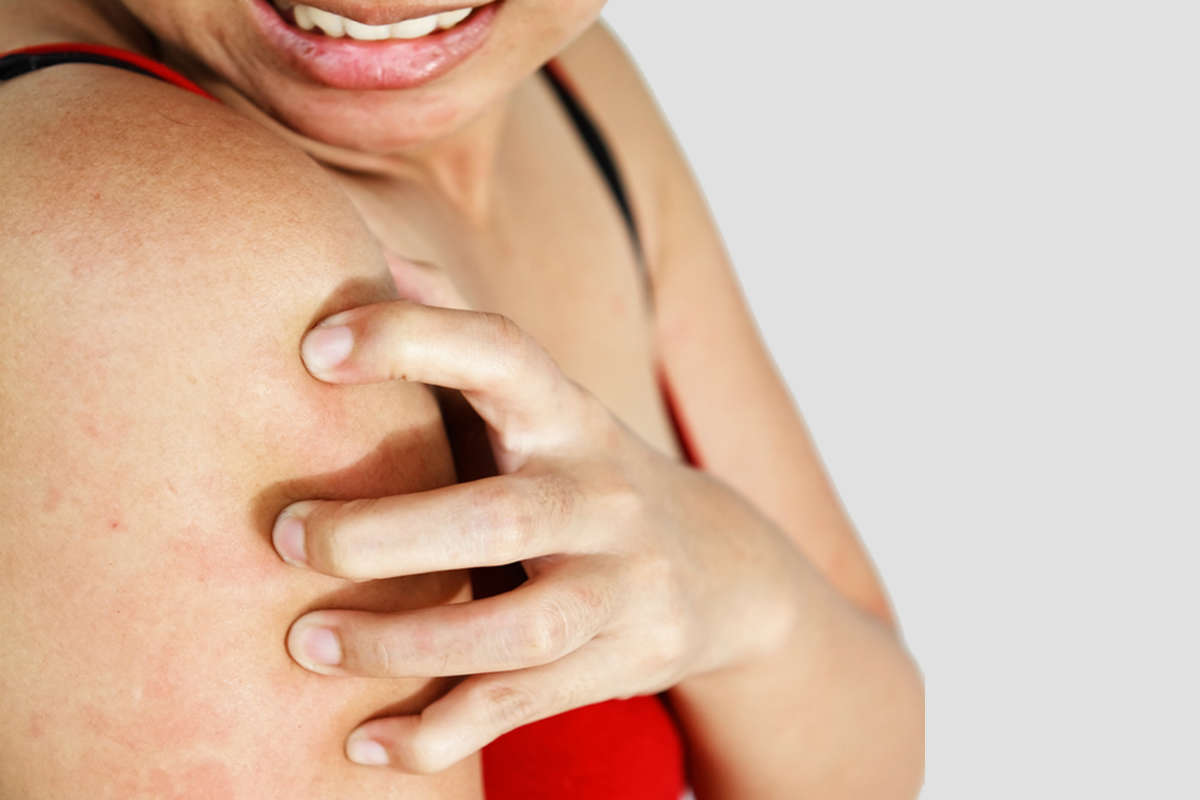
6. Training
If you are thinking of getting a pet such as cat or dog, pet training (obedience training, behavioral training and etc) is something that you can’t miss out. One of the basic training is potty training. There is no single, guarantee method for success in potty training. You have to invest time and effort in it. Dogs for example need to be taught so that they will be well behaved, or they will destroy your house and leave a big mess for you to clean up. Hamsters, rabbits or birds are types of pets that don’t require much training.

7. Get a veterinarian
Almost all pet owners have a veterinarian they can rely on for their pets’ medical concern. A Veterinarian is the first person you should approach when your pet is sick or injured. Veterinarians are also your important source of information about your pet. Find yourself a trustful veterinarian before getting a pet.
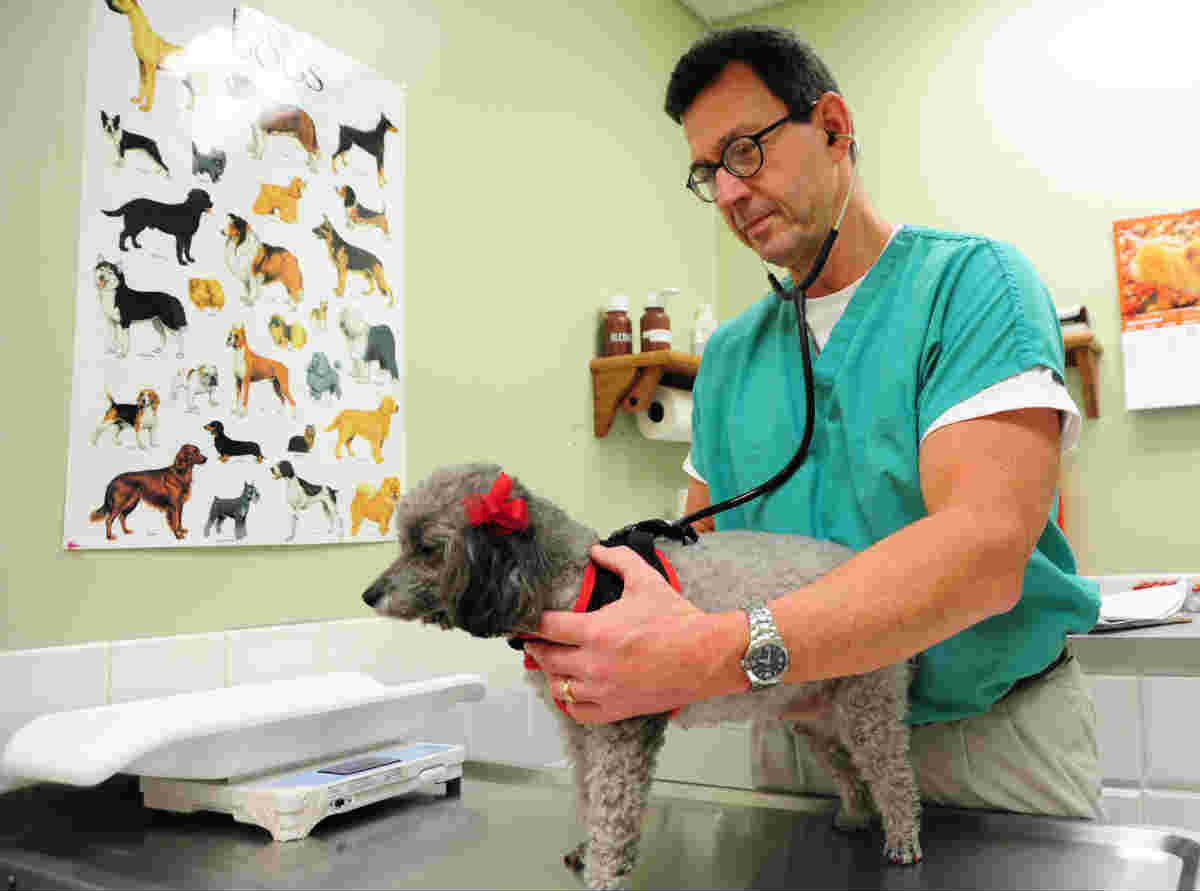
No matter what pet you are going to bring home, make sure to treat them well. Though owning a pet cost you time and money, I can assure you that it definitely worth it.
The Annual Cost Of Pet Ownership: Can You Afford A Furry Friend?
The first-year cost of pet ownership exceeds $1,000, according to the ASPCA. If you have the foresight and are considering bringing a furry friend into your home, you might want to ask: Can you afford to be a pet owner?
The costs of bringing an animal into your home go far beyond any initial adoption fee, which can vary from nothing at all to hundreds of dollars. Here is a breakdown of the average first year cost of pet ownership costs for one medium dog or one cat, according to the ASPCA.
One-time pet expenses:
Spaying or Neutering: Dog: $200 / Cat: $145
Initial Medical Exam: Dog: $70 / Cat: $130
Collar or Leash: Dog: $30 / Cat: $10
Litter Box: Cat: $25
Scratching Post: Cat: $15
Crate: Dog: $95
Carrying Crate: Dog: $60 / Cat: $40
Training: Dog: $110
Total One-time Costs: Dog: $565 / Cat: $365
Annual pet expenses
Food: Dog: $120/ Cat: $145
Annual Medical Exams: Dog: $235 / Cat: $130
Litter: Cat: $200
Toys and Treats: Dog: $55 / Cat: $25
License: Dog: $15
Miscellaneous: Dog: $45 / Cat: $30
Total Annual Costs without insurance: Dog $470/ Cat $530
Pet Health Insurance: Dog: $225 / Cat: $175
Total Annual Costs with insurance: Dog: $695 / Cat: $705
According to this report, the total first-year cost of owning a dog is $1,270 and for a cat it’s $1,070.
Depending on the food you buy and your actual medical expenses, the costs could be much higher. If you rent an apartment, expect to pay a sometimes no refundable pet deposit or cleaning fee, if your landlord allows animals at all.
What animal would you choose as a pet and why? Research the basic costs of that pet and email me a picture and your cost analysis quitta@4j.lane.edu
May 20, 2020
Organizing your room or apartment can be a challenge. One trick is to find a “home” for each item you own so that there is a place to put it away. Watch the video below for several other simple tricks to organize your stuff. Pause every 10 tips and write down at least one that you will try today. When you are done watching the video do at least two of the tips you wrote down. Send me a before and after picture to quitta@4j.lane.edu
May 18th, 2020
Cleaning your car &/or bike.
Today is a good day to take care of the family car or your bike. These are activities you want to do in the shade or on a “gray day” like we have today.
Here is a basic video of how to clean the exterior of a car. I really liked the final tip in this video, as this is something I hadn’t done before.
https://www.youtube.com/watch?v=E-M2Cq0RNTs
Interior of the car during Covid-19: This video shows how to clean the frequently touched areas in your car (this is not a thorough deep clean of the interior). -Make sure you don’t use chemicals that can damage the interior surface of your car. Soap and water will mostly do just fine on some areas. On frequently touched surfaces you may need more of the disinfectant products.
https://www.kbb.com/articles/car-advice/how-to-clean-your-car-of-the-coronavirus/
Cleaning your bike. This is something that I’m really not getting around to very often. As a result I have to take my bike in for tune ups and replace items more often (not smart). This video shows some basic steps and is using products and tools you all have at home. I know there are many special tools and products to use that are specific for bikes but this is using just common household items.
https://www.youtube.com/watch?v=QvzVRxlIUL0
If you don’t have a car or bike, perhaps you can ask to help your neighbor or a friend. Please send a pre & post photo to Anders or Jasmin.
May 13, 2020
On Monday we dusted and now it’s time to vacuum up all the dust bunnies. Watch the video below and go forth and conquer. Be sure to send me a picture of you work to quitta@4j.lane.edu or 541 954 7133
May 11th, 2020
This weekend was gorgeous and I was able to open my window and air out the house. This brought is some much needed fresh air but also helped me see all the dust that built up over the Winter! Today we will be dusting the house or room top to bottom and then on Wednesday we will be vacuuming. Dust lands on every surface of your home so be sure to pay attention to the following places:
- Light bulbs
- Overhead light fixtures
- Tops of books
- Tops of bookshelves
- Tops of kitchen cabinets
- Ledges at the tops of door and window frames
- Window frame ledges
- Plant leaves
- Candles (use dryer sheets)
- The top of the mantel
- The vertical surfaces on your dining and kitchen tables’ pedestals
- Bed frames
- The top of the refrigerator and items stored there
- Decorative items on your bookshelves
- Underneath your furniture
- The corners behind doors that are always left open
- Window screens
- Electronics’ screens
- Kitchen utensils left on the counter (and the container they’re in)
- Fake plants
- Lampshades
- The “valleys” in your tufted furniture (use your vacuum’s skinny nozzle)
- Baseboards
- Ceiling fans
May 6th, 2020
I opened my fridge the other day to see what snacks I can eat and immediately lost my appetite because a foul smell hit me as soon as I opened the door. Time to clean the fridge! Talk to the people in your home to let them know that you are cleaning the fridge or at least cleaning out old food. This activity usually takes me one to two hours so pace yourself, do it in stages and send me a picture of your completed work to earn some $. quitta@4j.lane.edu
May 4th, 2020
A Daily Schedule in the Midst of the Coronavirus Pandemic
Keeping to a daily schedule can help move forward with your life but it can be hard when the structure of school and work are changed. Today you will create a schedule for the week that you will follow to give you a framework. Make sure that each day you create a time for learning, cleaning and socializing.
Check our this daily schedule in the midst of the Coronavirus pandemic as an approach the “new normal” of using our home as a place to work, learn, play, and live. Setting times to eat three nutritious meals, get rest, exercise, and be productive can also help keep our immune systems high to fight this virus and other health issues.
The schedule also emphasizes sticking to activities that keep us disciplined, such as getting dressed and making our beds, instead of giving up on these areas. It’s just like going to work except you are commuting from your bedroom to an office in your home.
Download the blank schedule below and fill it out electronically or print it out. If you already have a planner or want to find your own on the internet use what you think is best.
weekly-schedule-monday-to-friday-in-color
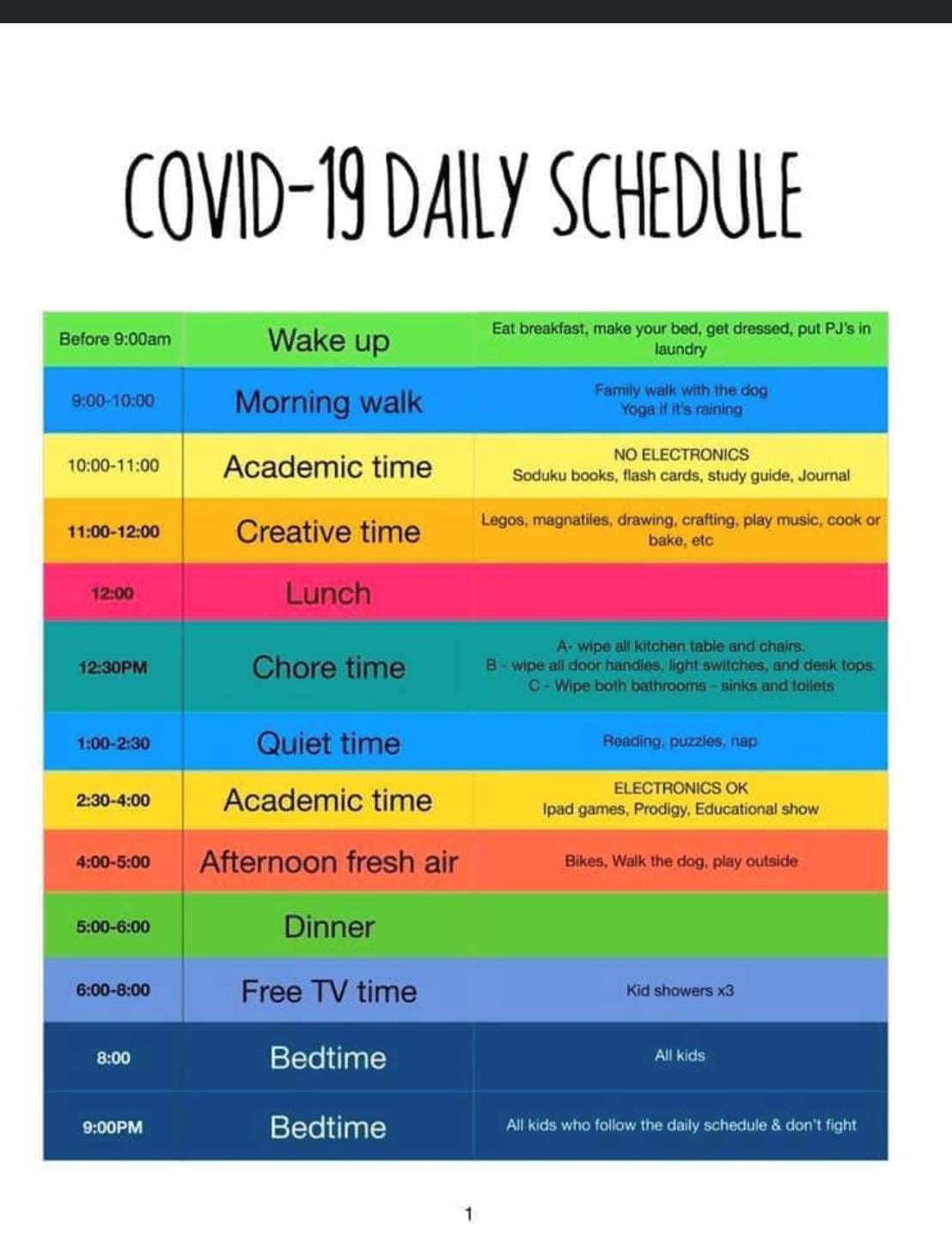 New Opportunities
New Opportunities
Most people may dread this new self-imposed quarantine and disruption to our lives, but we can also see it as an opportunity. With our hectic lives, we may have been missing out on a lot of time with each other. Our hobbies probably were long-forgotten and many other tasks around the house went undone. Now is the time to use those free times on the above schedule to reconnect with each other, pick up those hobbies, and catch up on much-needed activities and maintenance around the home.
Even though you are home and working differently, plan time to catch up with colleagues, friends, family, and neighbors virtually. We have so many technologies that allow us to continue meeting together online through video conferencing and tools like FaceTime and Skype. Be there to support each other and help them maintain the same sense of normalcy you are trying to keep in your own home. It’s a critical time to reach out to others around you to see if they need any help, a listening ear, or a kind word.
April 29, 2020
Buttons often come off of clothing and many pieces come with extra buttons attached. Sewing on a button is a great basic skill to keep your clothes in good condition. Ask for support from someone in your house if needed for knotting and getting supplies such as a sewing needle and buttons. Watch the whole video and at a minimum practice attaching a two hole button several times to a piece of fabric. You should rewind it and stop the video at each step so you can follow it. Below are also written step by step instructions. Send me pictures of your completed work! quitta@4j.lane.edu
Here is another good video with more step by step instuctions:
https://www.wikihow.life/Sew-a-Button
April 27, 2020
*Update – go to the follow sites to find out more about disinfectants
Please watch the video below. Go around your home and clean all the points of contact listed in the video with sanitizer.
- Door Handles
- Light switches
- Your Phone
- Faucets
- Your Hands
April 22nd 2020,
I know, I know…we cleaned our room last week, but guess what – it needs to be done weekly! Watch the video below and complete all the activities. I would love to see a picture of your completed clean room! Send it to quitta@4j.lane.edu
April 20th, 2020
How to Intensely Clean a Kitchen
How to Get Your Kitchen Spotless
:max_bytes(150000):strip_icc():format(webp)/165567791-56a4e83a5f9b58b7d0d9d61c.jpg)
Cluttered cabinets, a dusty refrigerator top, and an oven that smokes every time you bake are not the components of an ideal kitchen. Revive this important room in your home with a step-by-step tutorial on intensely cleaning the kitchen. You will need a bunch of cleaning materials and at least 90 minutes of time.
Set the mood for a productive cleaning session. Listen to music, an audiobook, or a foreign language tape. The time will pass a lot more quickly with an enjoyable atmosphere.
Materials
Trying to sort through the pantry cabinet for your oven cleaner might make you frustrated enough to start decluttering the cabinet, which will take you away from a regimented way of approaching this chore. So, first, gather all of the necessary supplies:
- Dust mop (preferably with a long handle)
- Stepladder
- Cleaning cloths
- Small bucket with handle
- Sponges
- Vacuum with attachment
- All-purpose cleaner, dish soap, or mild cleaner of choice
- Oven cleaner
- Shelf or cabinet liner and drawer dividers
- Broom and mop or towel
Begin With a 15-Minute Cleanup
Clear out the clutter and dirty dishes. This will give you room to do the actual intense cleaning projects. Do not worry about cleaning the floors yet.
Clean the Walls
Dust the ceiling and corners of walls; you will need a dust mop to reach the high spots. Determine if the walls need to be washed in dirty spots. Spot wash and don’t forget air vents, doorknobs, doors, and switch plates. Walls will likely need to be washed more often in this room than in others. You may not have noticed that the hand mixer or blender sloshed goop all over the wall; clean the grease, grime, and spilled food from your walls.
Dust and Clean Art and Photos
Be careful when cleaning framed art and photographs. Never spray cleanser or water onto the frame. The liquid can seep behind the glass and damage the pictures. Instead, lightly wet a clean cloth to wipe the frame and glass.
Clean the Ceiling Fan
Do not forget to dust off the ceiling fan. You may need to use a gentle cleanser like Murphy’s Oil Soap. Remove any light fixtures and gently wash and dry them before replacing.
Take down draperies, curtains, and blinds to wash or have cleaned according to the manufacturer’s directions. Vacuum and clean windowsills and corners. Wash the insides and outsides of the windows. Remove the screens, rinse, and replace.
Tackle the Oven and Refrigerator
Apply oven cleaner to the oven and as it does its magic, get started on the refrigerator. Leave the windows in the kitchen open to avoid the overpowering smell from the oven cleaner.
Do not forget to vacuum the coils of your unplugged refrigerator. This is a great time to sweep and mop underneath it too if you can find some help to move it. Sort through the freezer and refrigerator. Throw out any expired food, mostly empty containers, and items that you bought and never used. Put the stuff to keep on the counter.
Take out the refrigerator shelves and drawers. Wash them and work on getting rid of any remaining refrigerator odors. Wipe down the entire inside of the refrigerator and freezer before replacing shelves and food. If you have a fresh box of baking soda, open it, and leave it in your refrigerator to keep odors at bay.
Work on the Stove
Take the knobs, burners, burner covers, and spill catchers off of the stove. Follow your the owner’s manual for information on proper cleaning methods for your model. If you no longer have it, you should be able to find the directions online with a simple search of the make and model of your stove. Some stovetops lift up to allow easy access to spills and crumbs. Wipe down the entire stove and be mindful of the best ways to clean a cooktop, gas burners, electric burners, and a range hood.
Turn to the Appliances
Unplug all appliances first. Wipe and clean the toaster, blender, microwave, and other small appliances. If the spills in the microwave are fossilized, bring a water-filled cup to boiling in the microwave. The steam should help loosen the gunk. If the microwave smells, boil lemon juice in the microwave. Do not forget to clean the turntable.
Reorganize Kitchen Cabinets and Drawers
Clean out kitchen cabinets. Line the cabinets if needed. Remove mismatched lids and bowls. Take out anything that is not being used on a regular basis. Reorganize and wash down the inside and outside of cabinets. Wipe down and clean out any drawers. Organize your flatware. This is a great time to install drawer dividers to better organize your kitchen drawers.
Clean the Dishwasher
Run the dishwasher empty. Try adding vinegar or baking soda to the empty dishwasher before running it. If your dishwasher has a food trap in the bottom, clean it out. Wash down the outside of the dishwasher.
Work on the Countertops and Sink
Wash the countertops in your kitchen and the skin. Do not forget the backsplashes. If you have a garbage disposal, now is the time to pour baking soda with warm water or a lemon peel down the disposal to freshen the drain. Put ice cubes through the disposal to sharpen the blades.
Sweep and Mop the Floors
April 15th
Watch the video above and complete each “wave” I suggest you break down the task into three 45 minutes sessions of cleaning.
Wave 1 – Tidy by putting away items on counter and put laundry in a hamper. Organize by putting things away neatly. Pretreat toilet and shower with cleaner but alert others in the house so they don’t use a shower or toilet with cleaner in it.
Wave 2 – High dusting, start high to low (don’t forget about the baseboards). Cleaning the spots off the mirror spray and soak each item on the counter. Clean toilet, counter and shower/tub.
Wave 3 – Toss the bathroom garbage, disinfect points of contact like toilet handle and clean floors.
Reward yourself for all your hard work and send Jasmin or Anders a picture of your clean bathroom!
April13th
https://www.wikihow.com/Care-for-Your-Feet-and-Toenails
If you want, send Jasmin a picture via text or email of your pampered feet!
Hiking, running and jumping are some of the enjoyable activities your feet allow you to do. Feet contain 26 bones and joints that support the body’s total weight and travel over 100,000 miles in the course of an average person’s lifetime. They allow you to stand, balance, walk, move about and contribute to the alignment of your skeletal system. Some people spend as much as 80 percent of their waking hours on their feet.
The condition of your feet is important to your physical and emotional well-being. Feet need to be kept strong, healthy and comfortable. They are highly susceptible to injury because of constant use. Every year, people spend millions of dollars on over-the-counter remedies to correct problems that can be prevented with proper foot care.
This information covers common foot problems and proper foot care as well as provides tips for good foot maintenance to help keep your feet in top condition.
Common Foot Problems
About 98 percent of all people are born with normal feet; however, most people eventually suffer some form of a foot disorder by adulthood. Children may start to show foot defects or damage as early as age two. Most foot problems are caused by improper foot care. Here are a few of the more common problems and suggestions for treatment.
Athlete’s Foot – a fungus infection of the skin. It may begin with tiny blisters which burst and dry up, causing the skin to flake, crack, itch and burn.
Treatment: Try to keep your feet clean and dry. Wear cotton socks to help absorb moisture and discourage fungal growth. Use an anti-fungus powder or solution. If sores don’t heal after one week, see your doctor.
Bunions – Swollen and tender areas caused by misaligned joints. Usually the big toe is affected and develops an overgrowth of bone.
Treatment: Special cushions worn in the shoe can alleviate some of the pressure caused by bunions. Cortisone injections may help alleviate swelling.
Corn and calluses – Hard, thickened skin which usually causes a painful and burning sensation. Corns form on the top of toes above a center joint or on the soles of your feet. Calluses form on the heel or ball of your foot.
Treatment: Wear properly fitted shoes to reduce the friction and pressure on the feet which causes corns and calluses. Occasionally, surgical removal is necessary.
Foot Cramps – Sudden, very painful cramps in the arch of the foot caused by strained muscles.
Treatment: Stretch the arch muscle and massage it until the cramp ends.
Foot Strain – Dull, pulsating ache in the arch due to fatigue or stress on the foot.
Treatment: Rest your feet, soak them in warm water and massage them. If the pain persists, seek medical attention.
Ingrown Toenail – Corners of the toenail cut into your skin and cause pain – especially when pressure is applied to the toe.
Treatment: Soak your toe in warm water and get early medical treatment to prevent infection. Your doctor may correct the problem surgically.
Onychomycosis (Toenail Fungus) – A fungus infection which grows under the toenail, causing thickening of the toenail.
Treatment: See your doctor. Several types of anti-fungal medications are available.
Some foot problems are signs of more serious trouble. Seek medical attention if your feet suffer from chronic infection, foot or leg cramps, coldness or discoloration.
Caring for Your Feet
Proper foot care also includes foot maintenance. Here are a few things you can do to keep your feet healthy and prevent problems.
• Keep your feet clean and dry — wash your feet, change your socks and air out your shoes to prevent fungus infections.
• Rest and relax your feet every day. Lie back and elevate your feet for a few minutes. Give your feet a soothing massage with your fingers or roll your feet over a golf ball, tennis ball or a rolling pin for a similar effect.
• Exercise your feet to maintain blood circulation. Walking is best. Try taking brisk 30-minute walks five to seven times a week.
• Check your feet regularly. Look for sores, cracked skin and redness. Don’t forget to inspect the areas between your toes.
• Clip your toenails straight across, leaving nails a little longer than the tips of your toes to avoid ingrown toenails.
• If you notice problems with your feet, get it treated right away so it does not get worse.
Tips for Buying Shoes
Many people who shop for shoes put style above comfort, cramming their feet into shoes that are too tight or too high. Ill-fitted shoes can cause many foot problems. Buy shoes that are right for your feet by following these tips:
• Shop for shoes at the end of the day when your feet tend to swell.
• Use the hosiery or socks you plan to wear regularly with the shoes when you try them on.
• Avoid very high heels, platform shoes, clogs and other extreme styles.
• Try on both sides of the shoes and walk around, jump, lean or jog to see how the shoe feels. Don’t buy uncomfortable shoes. They can make you miserable and seriously damage your foot or another part of your body.
• Make sure there is a thumb’s width between the end of your big toe and the tip of the shoe and the ball of your foot fits comfortably in the widest part of the shoe.
• Buy the size that fits your larger foot, if one foot is slightly bigger.
• Look at the shoes while wearing them. If they are being pushed out of shape, they are too tight, Leather and fabric shoes are the most comfortable since they mold to the shape of your feet.
• Check the shoes for good quality, strength and durability. Look for good workmanship such as smooth stitching and finished edges.
• DO NOT buy shoes that you have to “break in.”
• Remember that brand name shoes do not guarantee comfort. If “no name” shoes fit well, buy them.




